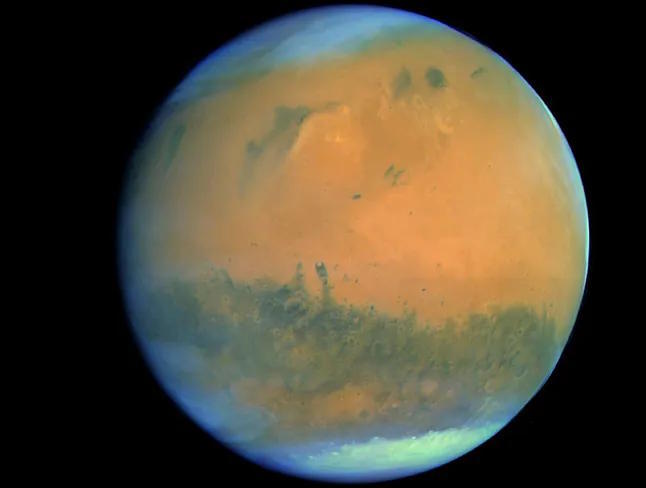The Romans, responsible for naming our planets after their gods, named Mars after their god of war because the blood-red color suited him perfectly. However, Mars was also the lord of iron, which inevitably should be associated with being the lord of rust, so unintentionally, with the naming, the Romans solved an astronomical enigma that continues to this day. Why is Mars red?
Thanks to the fleet of spacecraft that have studied Mars over the past decades, we know that the red color is due to the oxidation of iron minerals present in the soil. In other words, the iron present in the chemical composition of Mars' rocks has reacted at some point with water and oxygen in some way, similar to the rust that forms daily on Earth. Over billions of years, this oxidizing material has eroded into dust and has spread throughout the planet due to wind action, a process that continues today.
However, due to the absence of liquid water on Mars' surface, it was previously thought that its red-colored oxidized minerals arose from dry iron oxides present in the dust, such as hematite, formed under dry surface conditions through reactions with the Martian atmosphere over billions of years, after Mars' initial wet period.
However, a new analysis of observations made from spacecraft combined with innovative laboratory techniques shows that Mars' red color corresponds better to iron oxides containing water, known as ferrihydrite, according to research just published in Nature Communications. Ferrihydrite typically forms rapidly in the presence of cold water, so it must have formed when Mars still had water on its surface, and has retained its watery signature to this day, despite being ground up and spread throughout the planet since its formation.
"We were trying to create a replica of Martian dust in the laboratory using different types of iron oxide, and we discovered that ferrihydrite mixed with basalt, a volcanic rock, best matches the minerals observed by spacecraft on Mars," says the study's author and planetary geology expert at Brown University in the US, Adomas Valantinas.
"Mars remains the red planet, but our understanding of why Mars is red has changed. The main implication is that, as ferrihydrite could only have formed when there was still water on the surface, Mars oxidized earlier than we thought. In addition, ferrihydrite remains stable under current Martian conditions."
Analysis of the dust mineralogy carried out by Mars Express helped demonstrate that even the dustiest regions of the planet contain water-rich minerals. "The preservation of ferrihydrite on Mars also confirms the planet's environmental evolution: primitive Mars underwent a transition to the extremely arid current conditions. What surprises me the most is that ferrihydrite is a mineral that, on Earth, forms in very active conditions. Its preservation suggests that Mars was, so to speak, frozen," notes César Ángel Menor Salvan, a Biochemistry professor at the University of Alcalá, for the Science Media Centre.
According to Jesús Martínez Frías, president of the planetary geology commission of the Geological Society of Spain: "Until we have well-selected and sampled minerals, rocks, and regolith on Mars, like what a mission like Mars Sample Return could bring to Earth, and with experiments that allow us to drill the surface like those that the Rosalind Franklin rover intends to carry out, we will not be able to conduct detailed experimentation (including well-defined isotopic studies) and an assessment of the transformations, cycles, and sequences of processes and environments over the billions of years of Mars' geological evolution."
